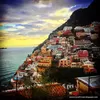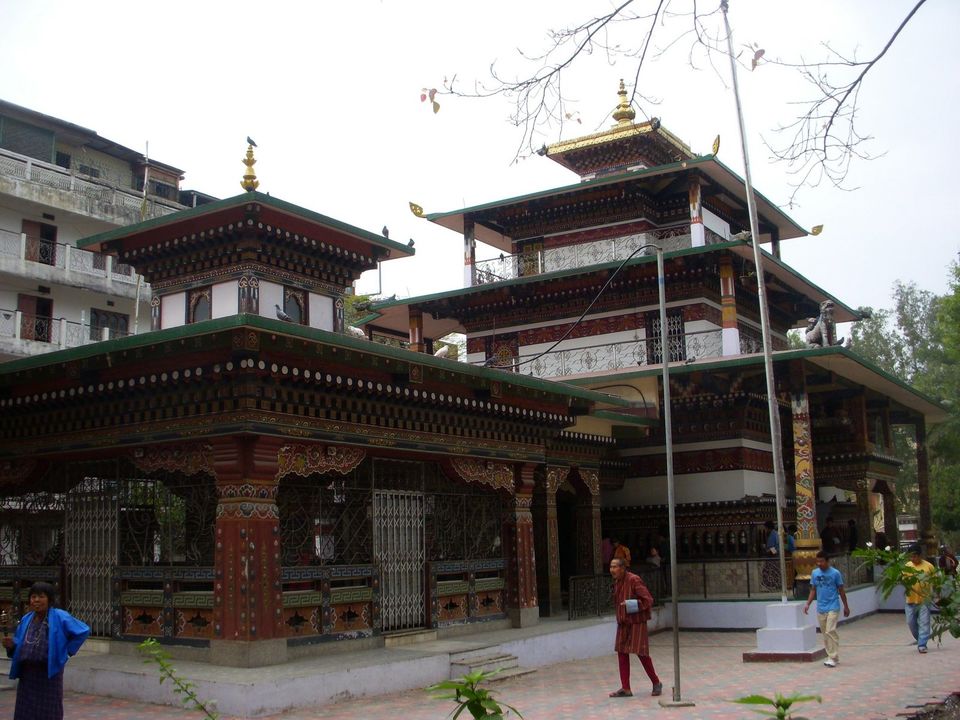
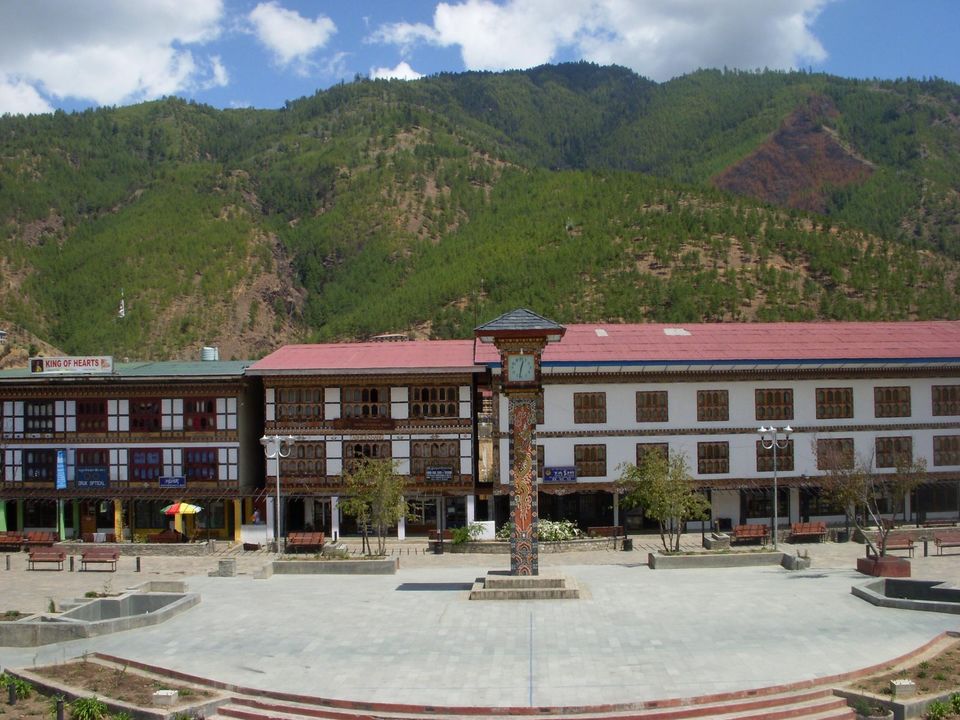
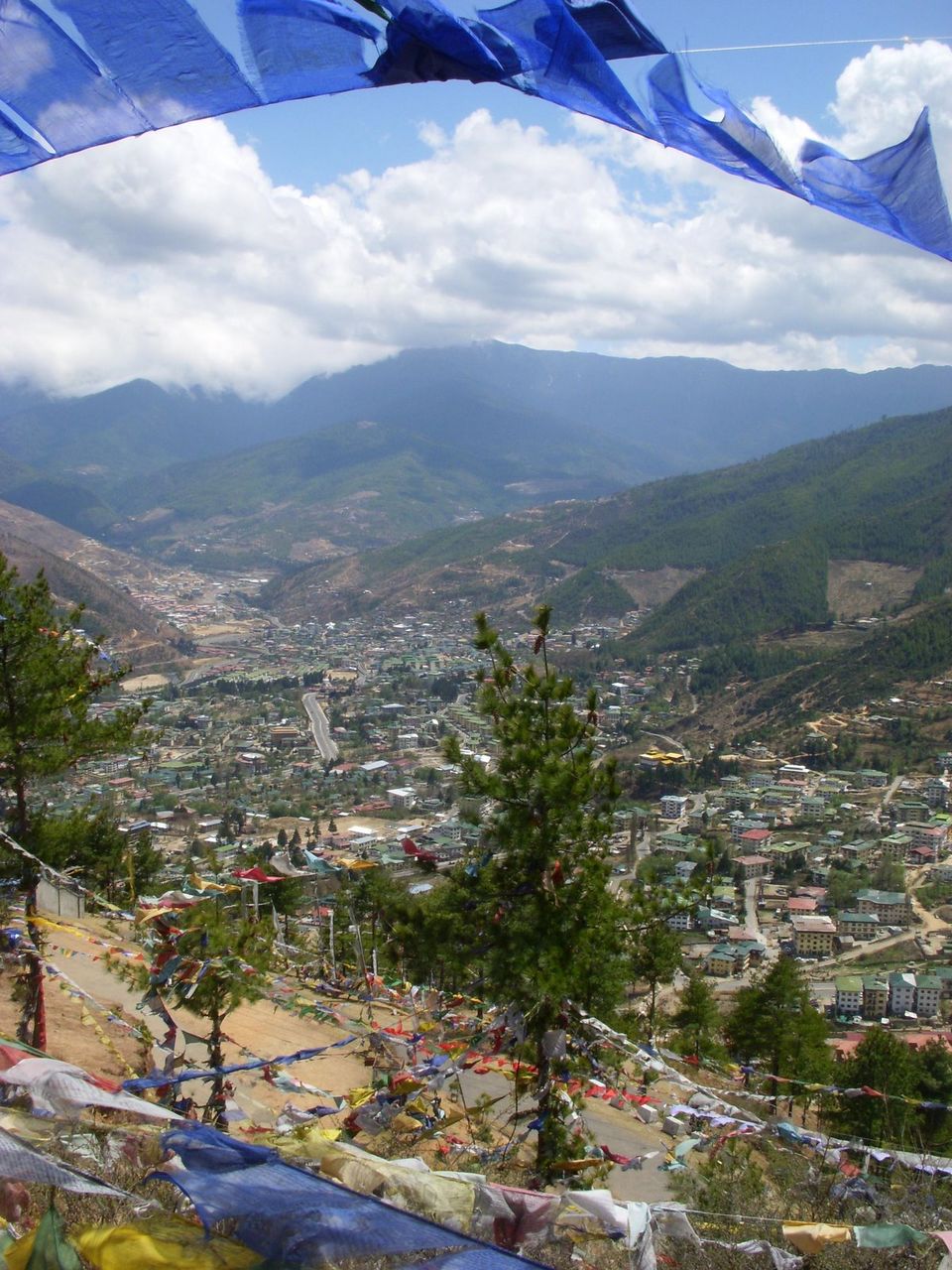
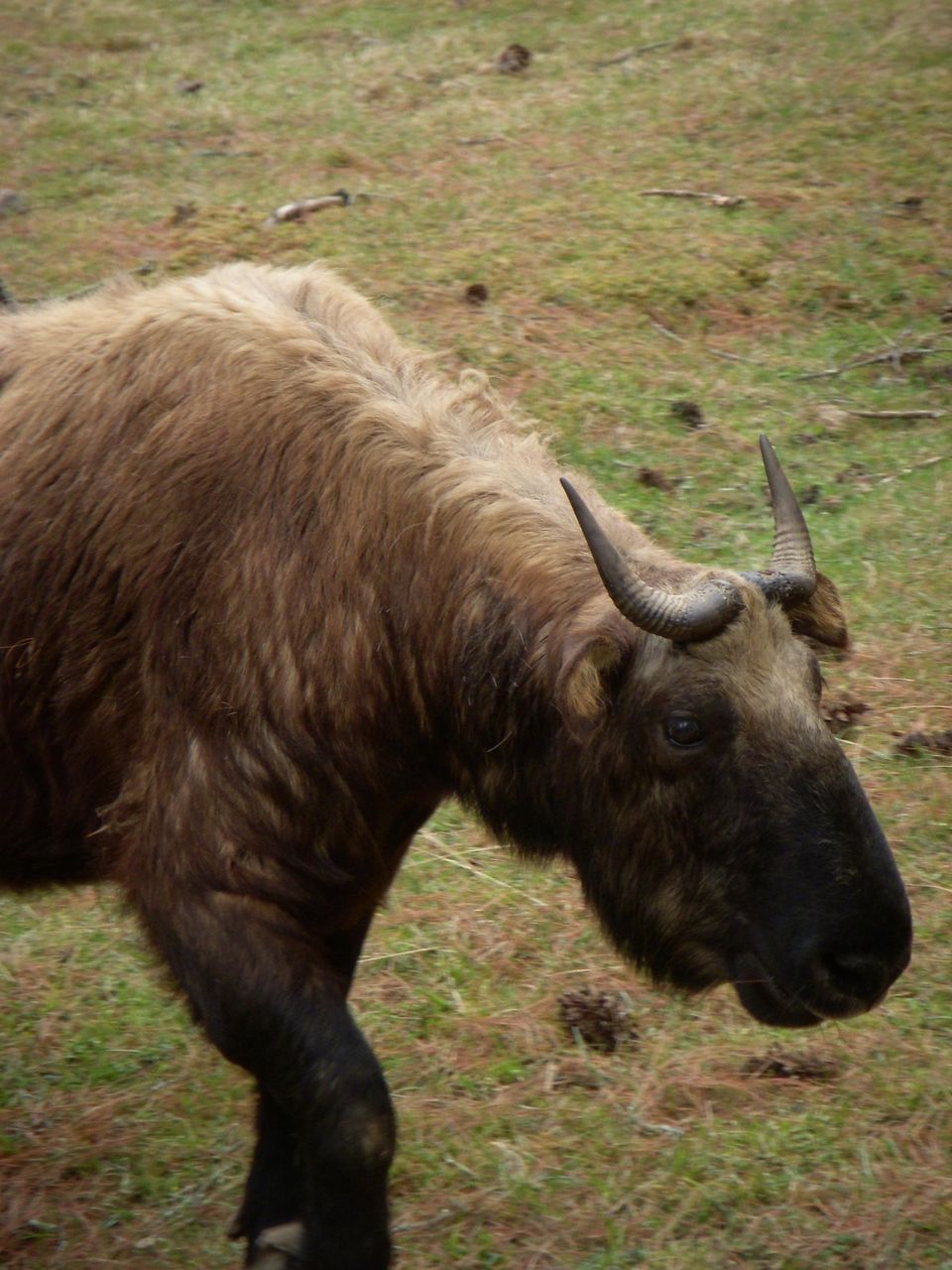
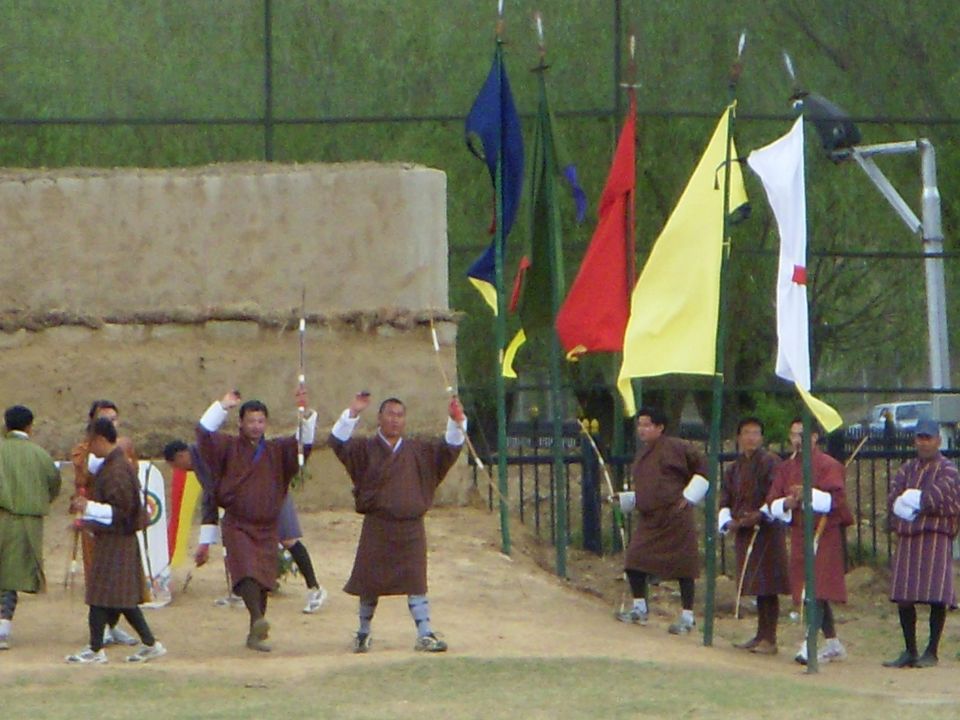
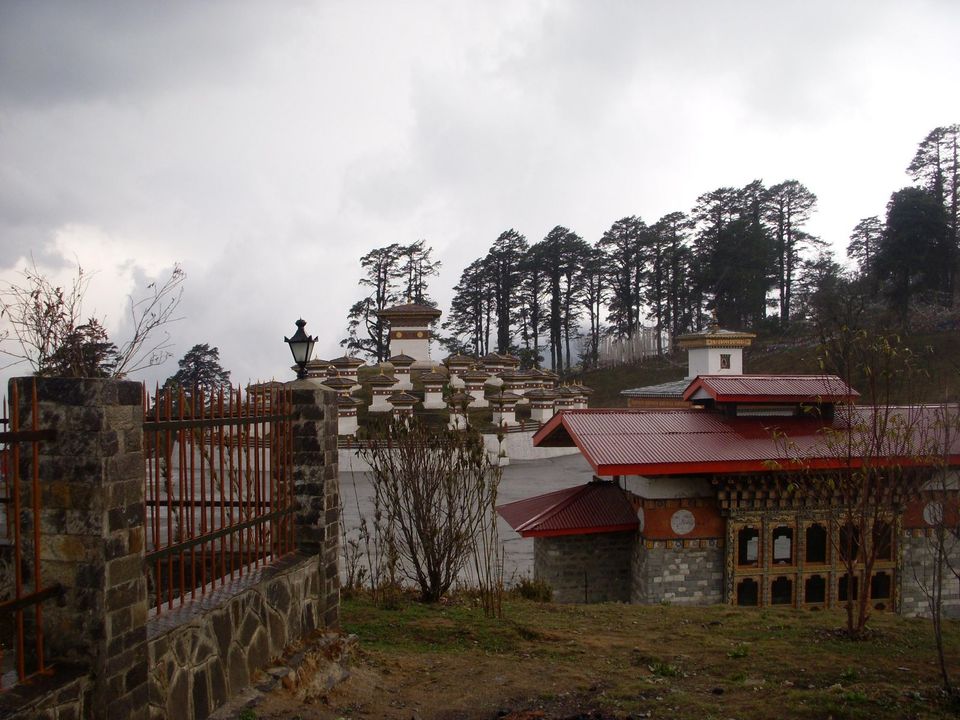
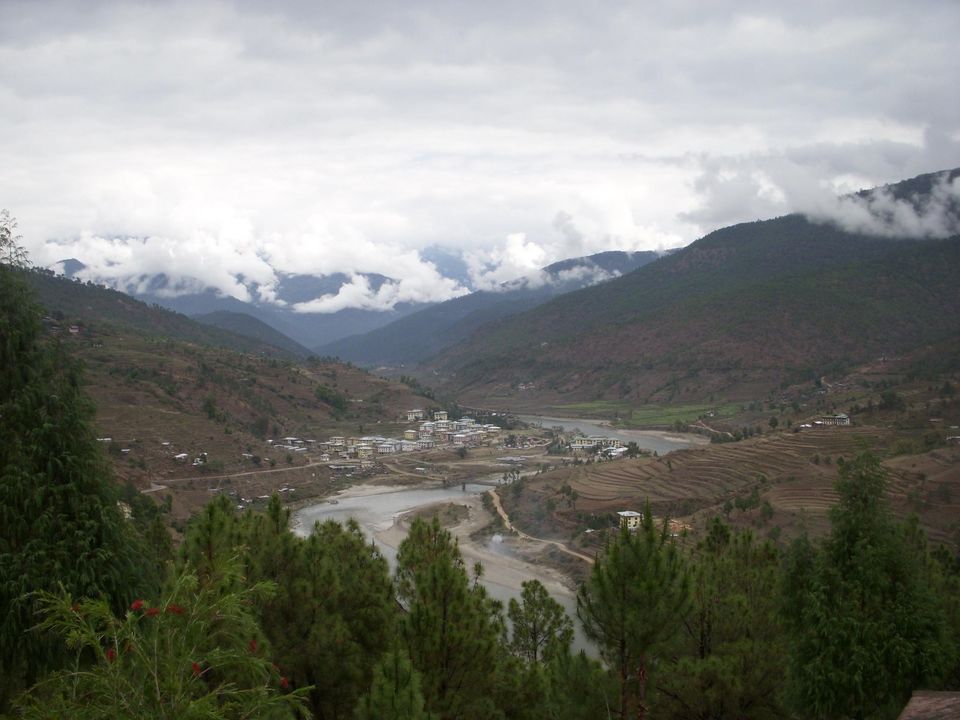
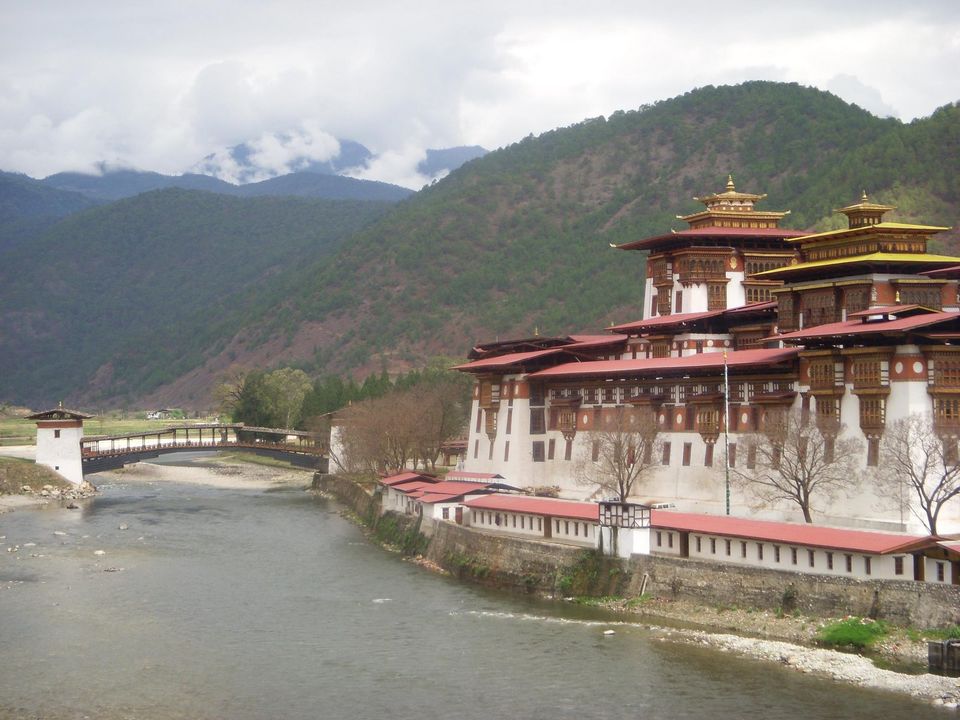
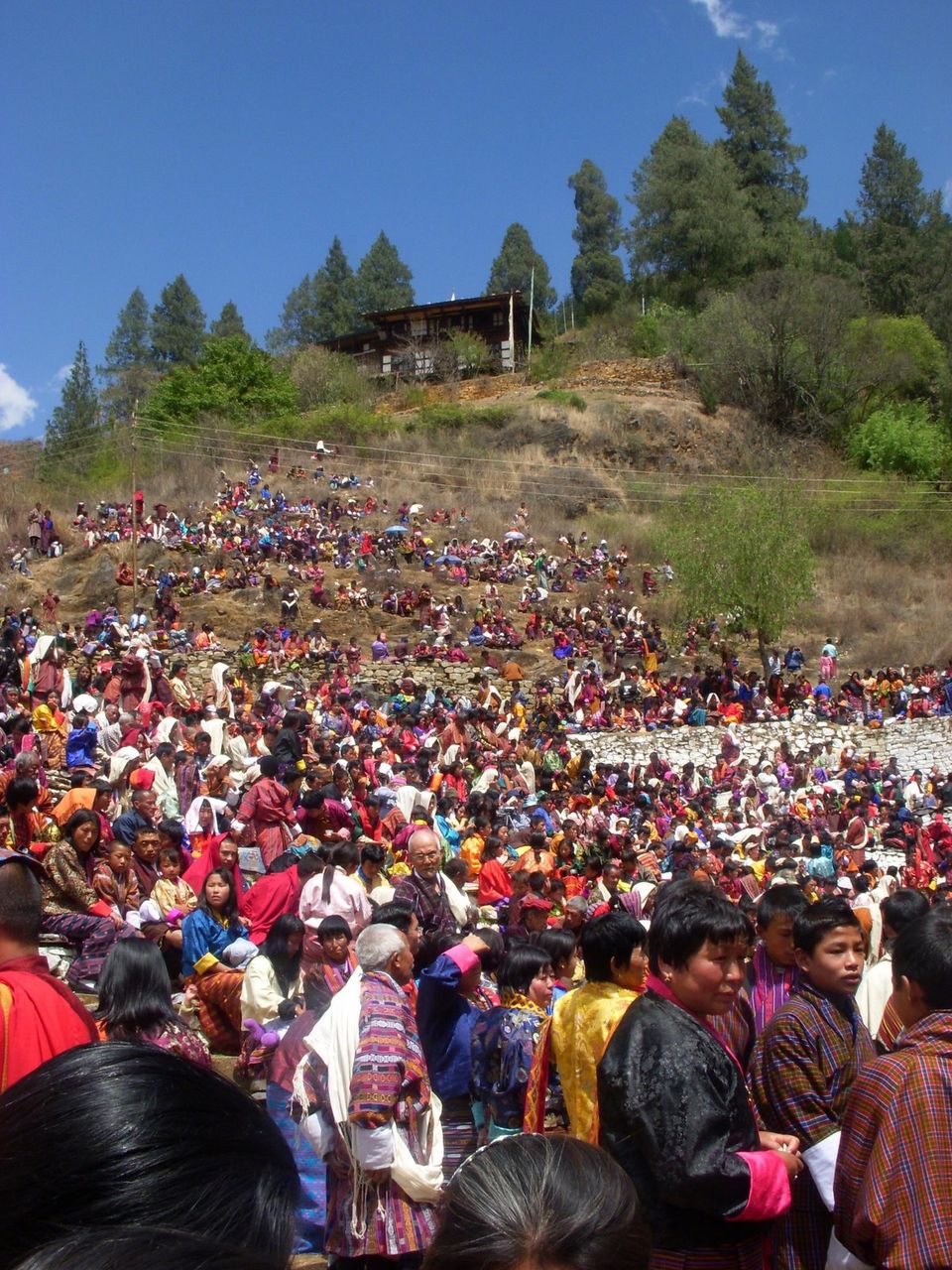
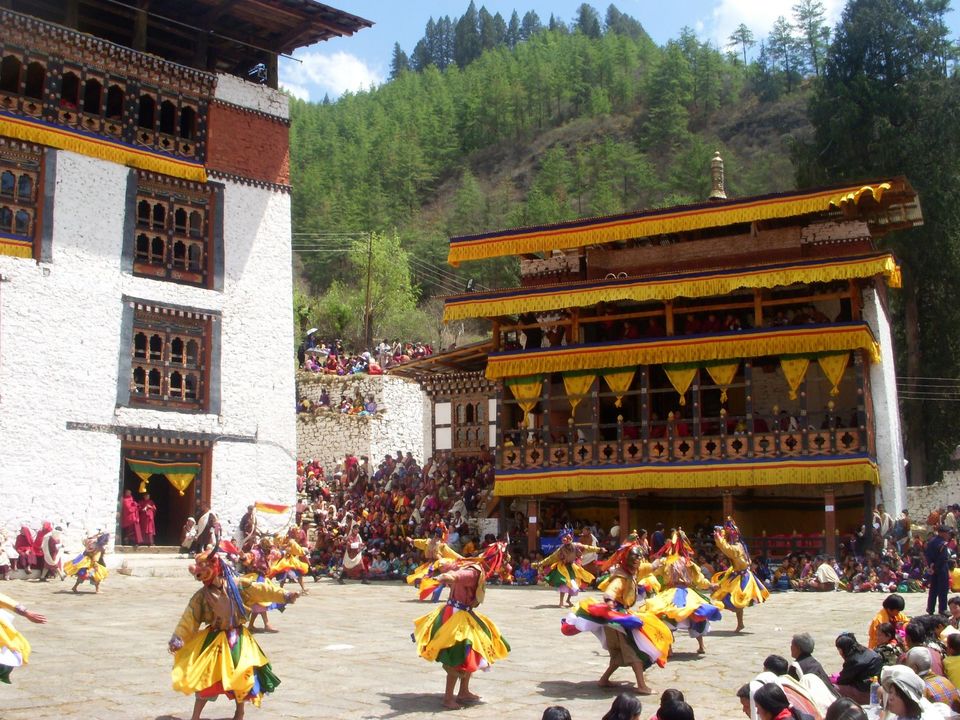
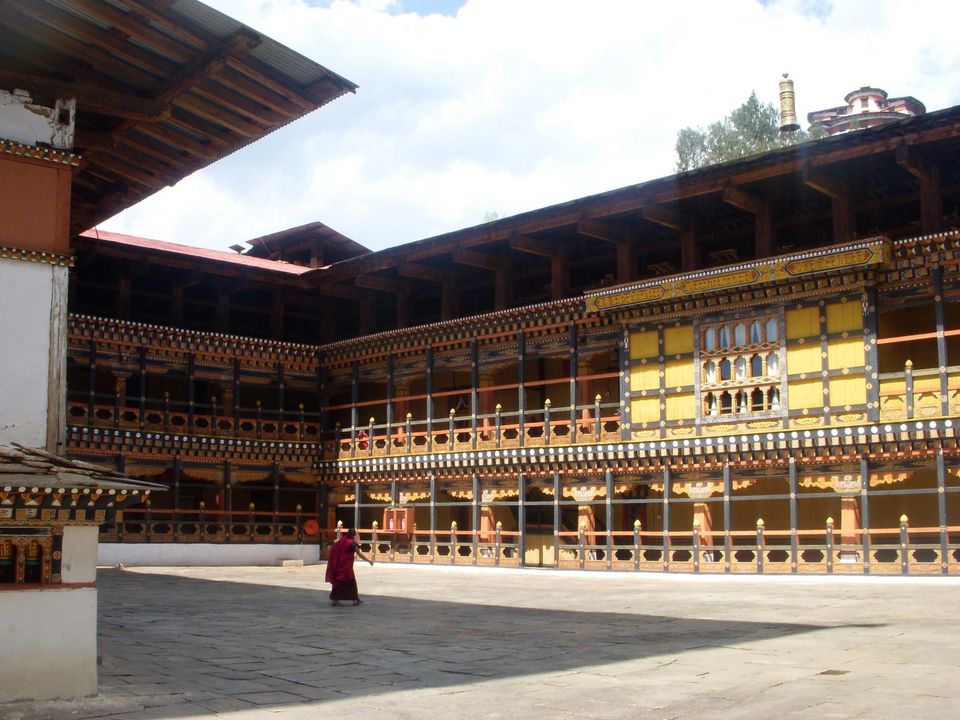
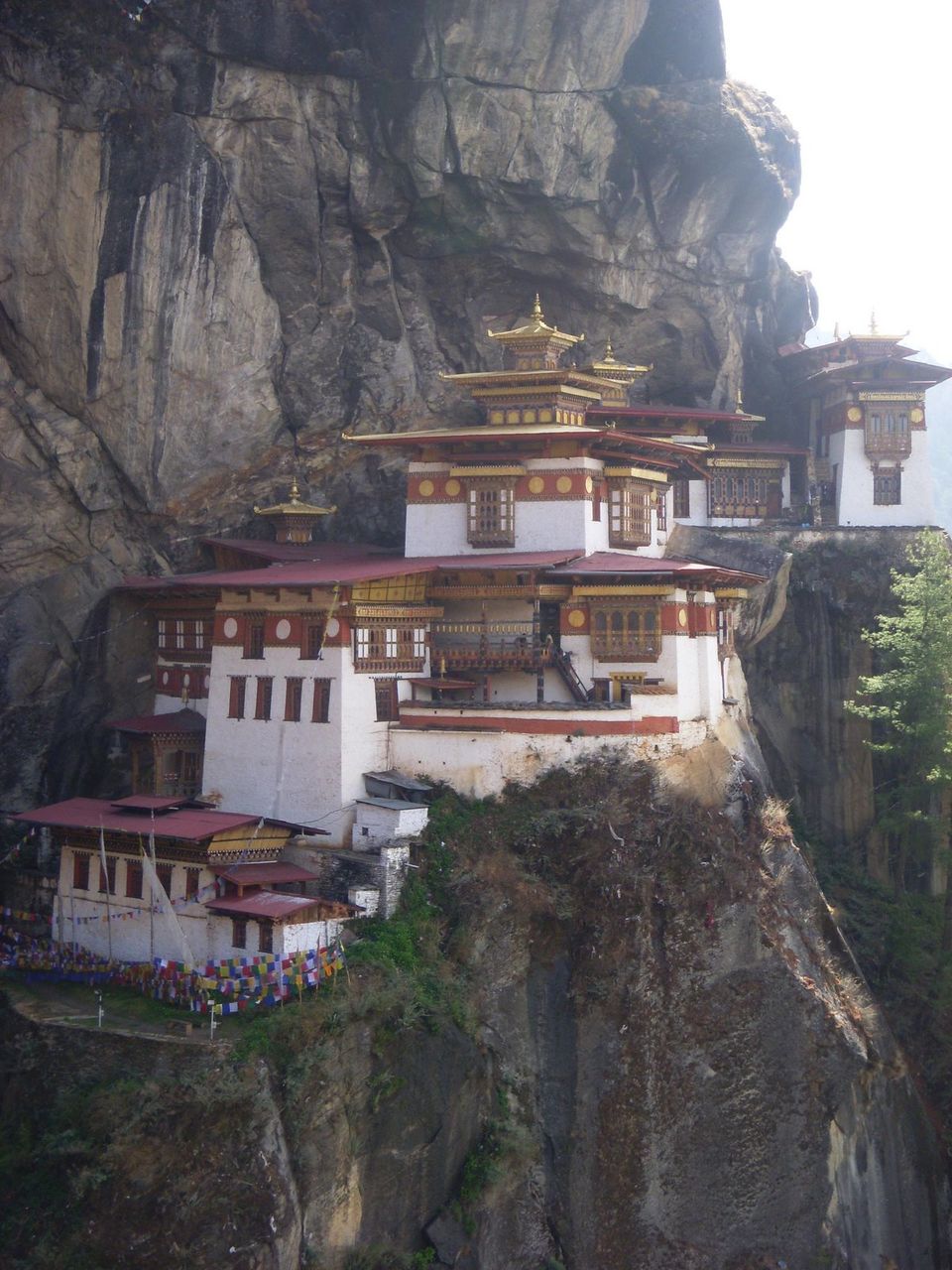
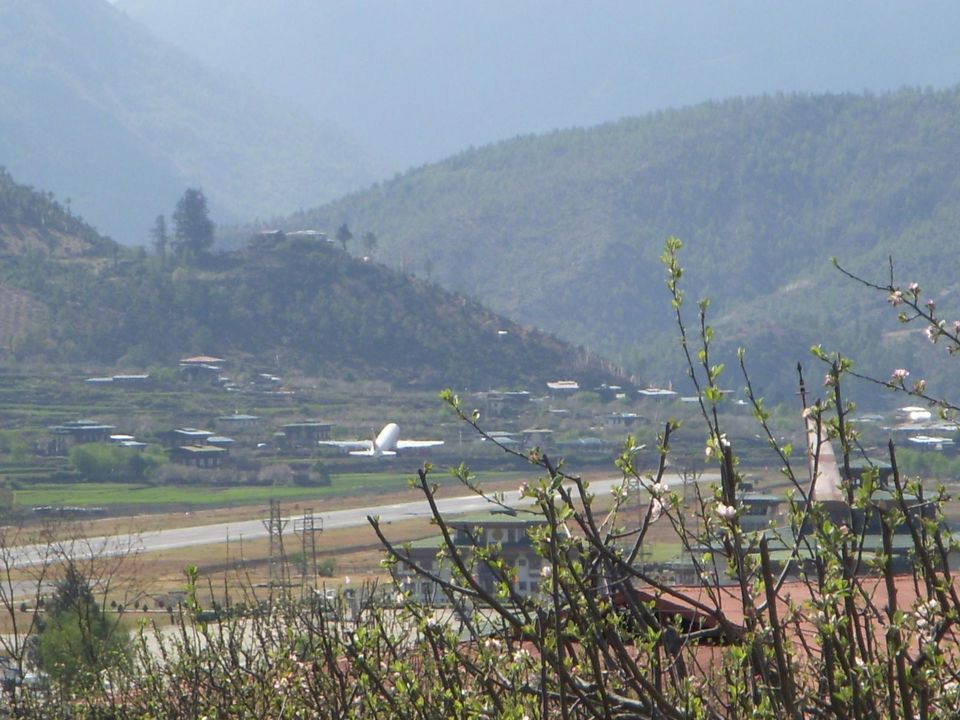
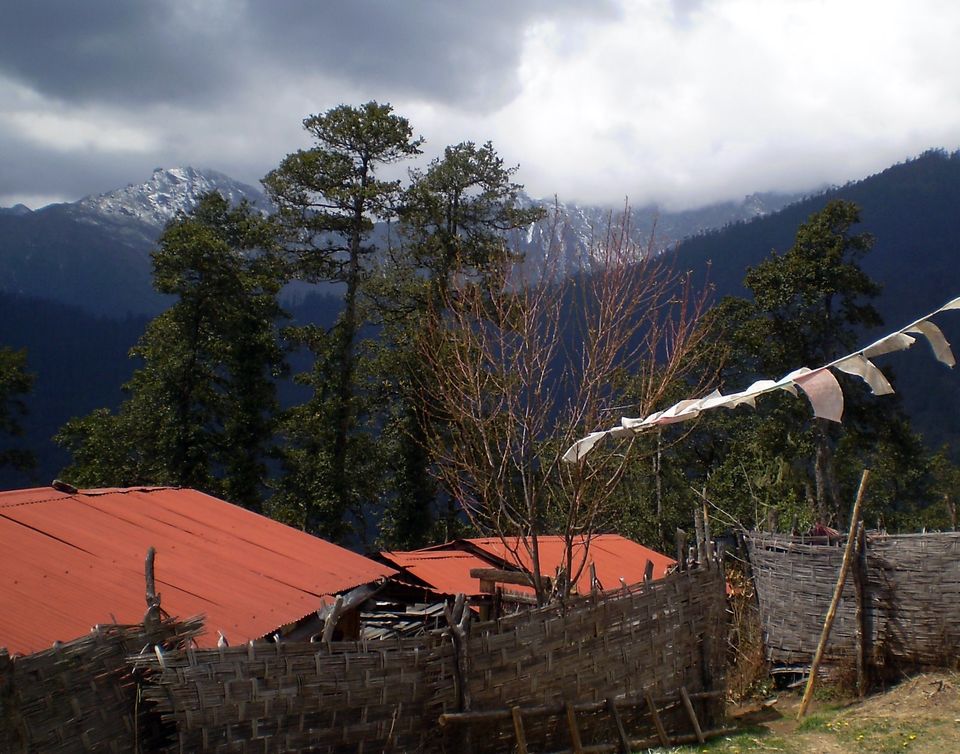
This trip was originally published on travelfreak
Details on trip at http://travelfrreak.blogspot.co.uk/2009/05/Bhutan-last-shangrila.html
Bhutan, said to be the last Shangri-la, the last heaven on earth. Beautiful place, deserving of the title 'untouched beauty!' A place which till 10 years back did not have the television even! The advent of the television and internet sure has changed the place from what it was ten years back, but still it retains the old world charm somehow. Its a very serene and calm place (like most of the Himalayas is) removed from the world, rich in history, culture and religion.....
The most popular places to visit in Bhutan are Paro and Thimpu, and a visit to the Punakha Dzong is a must do (Dzong means a monastery within a fort, and are a major part of the Bhutanese landscape). Eastern Bhutan is supposed to be even more fascinating and remote, but I wouldn't know of that, didn't get enough time for it:(. Its also not as easily accessible as the Western part i.e. Paro and Thimpu. All tourists (other than Indians and Bangladeshis) in Bhutan need to pay about $250 per day, just to be in the country. This payment covers basic accommodation, travel and food, but if you would like to stay at a better place, you would need to pay the difference. Hence, the quality and quantity of tourists to this country is controlled carefully by the government. Its much easier for Indians travel there, they just need to apply for a permit at immigration when they enter the country. Also, for most of the monasteries and regions on the country, you need to apply for a permit. So any traveller there should check about the permit for any place they are planning to visit.
Bhutan has one airport in Paro, and only Druk Air (the Bhutan national carrier) flies there. It is quite expensive too. So we actually drove down from India, landed in Bagdogra (in West Bengal) and drove from there to Thimpu. The drive from Bagdogra to Thimpu is about 10-12 hours, so its a good idea to spread it across two days. We stopped at Phuentsoling for the first night. Its a border town of Bhutan, with a wall separating it from India. On the Indian side of the wall is the town of Jaigaon, which is actually a trading town. This is the first point of the travel where you see the difference between the two countries, and a sample of what to expect. The two cities are just divided by a wall, and a giant gate welcoming you to Bhutan.
Phuentsoling is clean, and the buildings are different, the people are Bhutanese, and the common dress is the Go and Kira. On the Indian side, is the same, unhygienic conditions. Also for Indians driving to Bhutan, this is where you have to apply for the permit to visit Bhutan. The drive from Phuentsoling to Thimpu is quite long, and the road at many places is under construction. A good stop on the way for food is a canteen at Takki run by Dantak, amazzzzzzzzzzing chole bhature and dosa there, a must must do!!
Thimpu is the capital of the country, a small city, with a river flowing through it, the seat of the king and the government. The architecture is the same throughout the city, and each building looks the same, with the same wooden blocks, and colourful paintings throughout! Its quite a busy and bustling city, as per Bhutan standards!! Wide roads, top class vehicles, laidback life.. maybe that's what is meant by, ' the good life'!
The Thimpu Dzong which is the seat of the government can be visited, with a permit which can be obtained from Thimpu itself.There are a couple of treks nearby:the TV tower, and the Cheri monastery are the ones we did.
The trek at TV tower is quite steep, with a view of the city below. Its about 2 hours of trekking.
There is a takin reserve very near the TV tower trek. Takin is the national animal of Bhutan, and you should see it. Its a mix between cow and goat, quite a funny looking creature.
The Cheri monastery is another trek near Thimpu. Its one of the many monasteries spread out all over the country, at places slightly away from the city. The monasteries are all similar, with a temple inside, and llamas living within the monastery. The monks pray and work at the monastery itself. You can actually see lot of them working through the day, painting or making pottery or other similar arts.
At the Cheri monastery, walk beyond the monastery to the top of the hill, for a view of the valley below, and some peace if you are looking for it..! The trek is a comfortable one, takes about 3 or so hours to go upto the hilltop. There is a small stream running through the valley, at the point that the trek starts. It can be freezing in early summer, try crossing it sometime (believe me, its good fun!)
Thimpu is also known for its partying, the famous places being Club Ace, Escape, Ozone Bar, etc. We went to club ace, its located in the basement of a hotel. Good fun, the locales love to party(and thankfully to Hindi music!). Given how conservative the people look outside, and the traditional dresses that they wear, the club scene is quite different ;-). Ozone Bar is a cafe-like joint, known for its good food, as well as the celebrities which frequents this place. It resembles a sports bar too, except is much smaller.
Archery is the national sport of the country and you can see groups of people get together and practicing this game. Apparently, when the arrow hits the mark, the people standing next to the target start dancing.
Punakha is located about 2 or so hours away from Thimpu. Its again a small village, but famous for the Punakha Dzong. Punakha also used to be the capital of Bhutan, and the Dzong is one of the biggest ones in the country. On the way to Punakha, is to Dochu pass. At the pass itself are the 108 chortens, and there is also a temple to see there. On the way to Punakha itself there are a couple of tea cafes, which provide a good view of the valley. The view becomes better during the blossom season, which is end April-early May, when apparently the whole of Bhutan blooms. We missed that though, but that should be a good time to visit the country.
The Punakha Dzong is situated at the meeting point of two rivers, Pochu and Mochu (meaning girl and boy) and is similar to the Ganga Jamuna sangam. The two rivers have different shades, and when they meet, this shade difference is visible. The Dzong is huge, one of the biggest in the country
Punakha is a small town, with a couple of good resorts, We stayed at one such resort, on top of the hill. Very good hospitality, the Bhutanese people are very friendly and eager to help. We landed up at the hotel, with no place to stay. Thanks to the attendant, 5 of us managed to get one room to stay!! The view from the resort was amazing, and we actually walked from here to the Dzong. On the way back from Punakha, you can stop at the Wangd Dzong also, which I did not find as impressive except that it was built on a cliff. When we went back from Punakha, I did not realise how much I had liked that place, even Thimpu looked very crowded and too busy now!
At Paro, which is the second biggest city in Bhutan, there are a lot of hotels to stay, and they ALL look the same:) Same square looking, colourfully painted buildings. Paro is located on the banks of the Paro river. The high point of the city is the airport runaway though, an engineering marvel, and an aviation marvel everytime the flight takes off! Paro is located in a valley, and the plane, to avoid the hills need to fly very skillfully to miss them. Its a pleasure to watch a plane take off at the Paro airport!
The national museum and the Dzong are the other two places to go to in Paro. They are located on a hill, and provide a picturesque sight at night, when they are all lit up.
There is a Paro festival that happens every April at the Paro Dzong. We went there and what struck us most was the riot of colours there. The Bhutanese people dress very colourfully, red, orange, pink, green! Everything and anything. The men wear the Go (like a skirt) and the women wear Kira, which has three colours generally. Here is a pic showing the crowd there, watching a dance.The Bhutanese dance is very slow, with slow movements, and most of them are based on religious themes.
Thakshang monastery is the most famous tourist spot of Bhutan. Its a monastery which is linked to the founding of Buddhism in Bhutan. Its perched on a cliff, and you wonder how it was ever built. The trek is about 2 hours, and its mesmerizing when you get the first view of the monastery. On the way to the monastery is a tea shop (where 1 tea is for 72 rupees!).
Shopping in Bhutan is very expensive, dont think is worth it. Some of the handicrafts are the traditional Buddhist paintings, wall hangings etc, but are more directed at the foreigners. They also have pretty antique jewellery (from Tibet), stone jewellery and a lot of warm clothes, like woollen shawl, dresses etc. Trekking is good, but quite expensive, so we were not able to do that. People love playing carrom, you will find men standing at squares, playing carrom, while the women work! Most of the shops are actually run by women. They are not very interested in selling their stuff though. Its upto you to find what you are looking for, they are more interested in watching the Hindi channels:). People speak decent Hindi and English everywhere, so that makes it an easy place to travel. The Bhutanese cinema halls only run local movies, and they are supposed to be slow, and based on religious themes again. We tried to see one movie, but it started so late, that we left by then.
Bhutanese alcohol is cheap, actually quite cheap. Dunno how good it is though! Food is relatively easy to come by, especially Indian. The taste though is open to discussion. It helps though if you like eating Maggi, at times that might be the only tasty option left. A place to go to in Paro is the Dantak canteen near the airport. It serves amazing chole bhature, jalebis and dosa, especially if the weather is cold. Did not try much of the Bhutanese fare though, not that adventurous. Also, if you order 2 or more plates of a single sabzi, the same quantity is served! You may need to tell them to serve differently!
Religion is present everywhere in the country. Dzongs are seats of religion as well as government. The llamas in the monasteries spend their time in arts and crafts, decorating the monastery. The king is considered God everywhere in the country, and is very much respected. You will see his pictures hung everywhere across the country. The current king is about 28 years old, and the sixth in the current royal family.
All in all, its a nice calm to go to. Adventure sports to do, but the terrain if not for the people, is similar to whats found in India, say in Sikkim or Arunachal.

